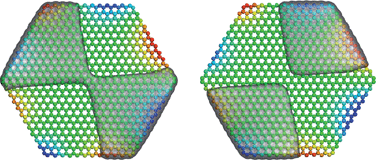Ripple induced changes in the wavefunction of graphene: an example of a fundamental symmetry breaking
Abstract
Ideally,

- This article is part of the themed collection: Modelling of the nanoscale
* Corresponding authors
a CSIRO Materials Science and Engineering, Private Bag 33, Clayton South, VIC, Australia
b
Applied Physics, School of Applied Sciences, RMIT University, GPO Box 2476, Melbourne, VIC, Australia
E-mail:
ian.snook@rmit.edu.au
Fax: + 61 3 9925 5290
Tel: +61 3 9925 2143
Ideally,

 Please wait while we load your content...
Something went wrong. Try again?
Please wait while we load your content...
Something went wrong. Try again?
A. S. Barnard and I. K. Snook, Nanoscale, 2012, 4, 1167 DOI: 10.1039/C1NR11049G
To request permission to reproduce material from this article, please go to the Copyright Clearance Center request page.
If you are an author contributing to an RSC publication, you do not need to request permission provided correct acknowledgement is given.
If you are the author of this article, you do not need to request permission to reproduce figures and diagrams provided correct acknowledgement is given. If you want to reproduce the whole article in a third-party publication (excluding your thesis/dissertation for which permission is not required) please go to the Copyright Clearance Center request page.
Read more about how to correctly acknowledge RSC content.
 Fetching data from CrossRef.
Fetching data from CrossRef.
This may take some time to load.
Loading related content
